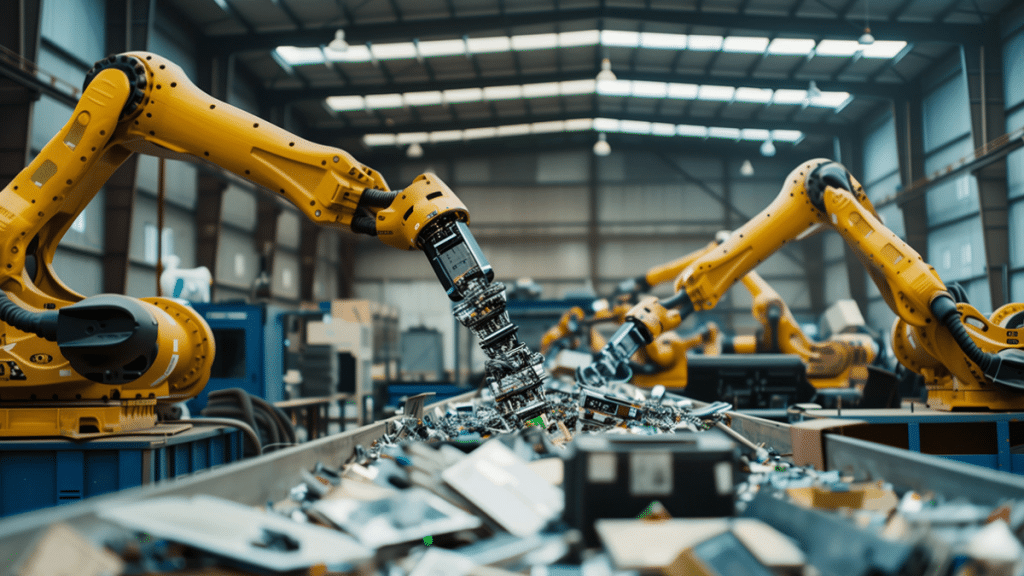As robotics technology continues to evolve, its integration into industries ranging from manufacturing and healthcare to defense and personal services has intensified. Advanced robots are now capable of performing intricate tasks, adapting through machine learning, and interacting in dynamic environments. While these machines offer remarkable utility, their complex composition presents significant challenges when it comes to end-of-life dismantling and recycling. Unlike simpler electronic devices, advanced robotics incorporate a blend of high-value materials, sensitive electronics, proprietary software, and intricate mechanical assemblies—all of which complicate traditional electronics recycling processes.
Structural and Material Complexity
Advanced robots are often designed for durability, precision, and high-performance operation. Their internal structure includes a wide array of specialized components such as high-torque actuators, multi-axis joints, high-resolution sensors, fiber optic cables, and reinforced exoskeletons. These parts are tightly integrated and often sealed to protect against environmental hazards, making manual disassembly labor-intensive and technically demanding.
Additionally, the materials used in these systems vary widely, including rare earth magnets, titanium, aluminum alloys, carbon composites, and non-standard plastics. Separating these materials requires specialized knowledge and equipment. Many of the materials used are bonded or fused, reducing the feasibility of component recovery without damaging them or creating contamination.
Proprietary Designs and Software Locks
Many advanced robots are protected by intellectual property constraints, which can impede reverse engineering for dismantling. Proprietary fasteners, encrypted software, and inaccessible firmware can restrict access to internal systems, making it difficult for e-waste recyclers to safely or legally disassemble the units.
Moreover, advanced robots often rely on embedded systems that integrate hardware with proprietary software. These systems may store sensitive operational data, or may be programmed with region-specific configurations. In some cases, manufacturers intentionally discourage tampering or refurbishment to protect brand integrity, limiting the recyclability of devices that still have reusable components.
Hazardous and Delicate Components
A further complication in dismantling advanced robots lies in their inclusion of hazardous and delicate components. Lithium-ion and lithium-polymer batteries, for example, are common in mobile and semi-autonomous robots. These batteries can be difficult to extract safely, particularly if they are embedded within internal frames or surrounded by other sensitive circuitry.
Robots used in medical, laboratory, or industrial applications may also contain biohazardous or chemically exposed components. These require specialized disposal protocols to avoid environmental and health risks. Furthermore, certain robots incorporate laser systems, pressurized hydraulics, or radioactive sensors that must be decommissioned with extreme caution.
Lack of Standardized Recycling Processes
The rapid pace of innovation in robotics has outstripped the development of standardized dismantling and recycling protocols. Each robot model may differ significantly in construction, requiring custom tools and procedures for proper disassembly. This inconsistency makes automation of the recycling process nearly impossible and raises the cost of manual labor involved.
In contrast to more uniform electronics such as smartphones or computers, advanced robots lack mass production uniformity. Custom-built robots for specific tasks or industries, including those used in defense or research, may be one-of-a-kind. Without service documentation or standardized parts, recyclers face steep challenges in determining how to disassemble these devices efficiently and safely.
Data Security and Ethical Disposal
Advanced robots that perform functions involving data collection—such as autonomous delivery robots, service bots, or surveillance units—often retain stored information. Recycling such devices must involve secure data wiping to protect personal privacy or commercial secrets. Improper handling can lead to data breaches or unauthorized use of recovered components.
In military or sensitive commercial settings, even the structural or design knowledge of the robot may be classified or proprietary. Dismantling such robots without oversight or proper chain-of-custody management raises ethical and security issues.
Toward a More Sustainable Robotic Future
The challenges of recycling advanced robotics call for a multi-pronged approach. First, design for disassembly should be a priority in the development phase, encouraging manufacturers to consider end-of-life processing from the outset. Modular construction, clear labeling of materials, and the use of standardized components can make recycling more feasible.
Second, collaboration between robotics companies and the recycling industry is essential. Shared guidelines, recycling-friendly certification practices (outside of compliance standards), and more transparent design disclosures for end-of-life units would greatly improve the viability of recycling operations.
Finally, investment in robotic recycling technologies could provide a scalable solution. Ironically, robots themselves may one day aid in the dismantling of other machines, using precise manipulation and AI-guided analysis to identify and sort parts more efficiently than human workers can.
Conclusion
The dismantling and recycling of advanced robotics is a complex and often under-addressed issue in the broader conversation around electronic waste. As the world becomes increasingly reliant on robotic systems, the challenge of responsibly managing their disposal must be treated as a critical component of technological sustainability. By aligning design innovation with recycling foresight, and bridging the gap between manufacturers and waste management systems, the path toward a more circular economy for robotics can be realized.
